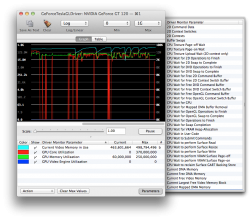It's interesting, but at some point early on in using Aperture 3, I appear to have disabled previews. Now, I'm starting to wonder why I did that.
In reading up on it, it seems that previews are good for flipping through images quickly and sharing them with other applications, but it also consumes a lot of resources in creating them upon import and then again with each adjustment. I also see articles related to rebuilding them due to issues, and even deleting them to save GB of space.
So there are trade-offs involved with using them.
Are you using them? Was it a conscious decision or just a setting you never bothered to change? Why? What are the pros/cons from your perspective?
In reading up on it, it seems that previews are good for flipping through images quickly and sharing them with other applications, but it also consumes a lot of resources in creating them upon import and then again with each adjustment. I also see articles related to rebuilding them due to issues, and even deleting them to save GB of space.
So there are trade-offs involved with using them.
Are you using them? Was it a conscious decision or just a setting you never bothered to change? Why? What are the pros/cons from your perspective?


